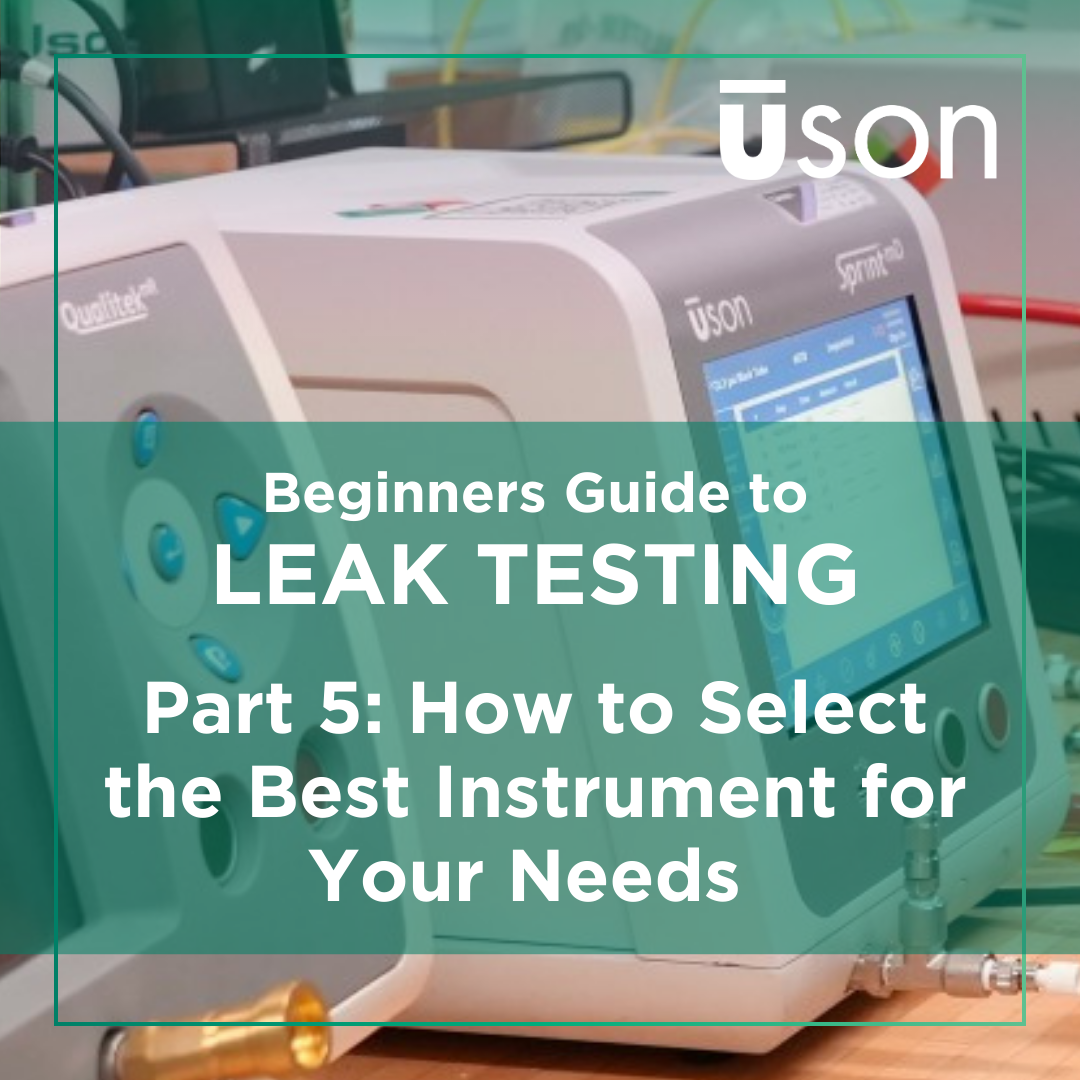The Beginners Guide To Leak Testing - Part 1: Why Leak Test?
In Part 1 of The Beginners Guide to Leak Testing discover the importance of leak testing and how it can positively impact your business's...
With the multitude of leak and flow instruments on the market, selecting the right or best leak instrument for your application can be a complex decision, but it doesn't have to be overwhelming.
In Part 5 of this series, we will guide you through the critical steps of choosing the best instrument for your specific needs. Whether you're performing simple leak tests, complex multi-step processes, or flow and burst tests, understanding the nuances of your application is key.
We’ll cover everything from technical qualifications like test volume, sensitivity, and throughput, to evaluating instrument manufacturers for quality, flexibility, and support. By the end, you’ll be equipped with the knowledge to confidently select the best leak and flow instrument to ensure efficiency, accuracy, and long-term value for your manufacturing process.
Before selecting a leak instrument, you must clearly define the application. This will be the foundation of your instrument choice. When speaking with our applications engineering team or sales specialists, this is the first topic we’ll discuss.
These factors will guide the technical requirements for your leak testing instrument.
Once the application is defined, the next step is determining the leak specification. This will drive the selection of the most suitable testing technique and instrument.
The leak specification sets the criteria for pass/fail decisions and may be expressed in terms of:
Armed with the leak specification and application, we can narrow down the options to ensure we provide the most accurate and repeatable results for your process. Additionally, this information helps us calculate the test cycle time to ensure that the instrument can meet production requirements.
Environment and throughput are key factors that determine the type of testing and instrument you’ll need to perform your part or product analysis efficiently. The testing environment is broadly categorized into:
On-line testing will also clarify the level of automation required, including:
By the end of the technical qualification, we’ll have determined the appropriate technique, instrument type, and necessary features to meet your product testing requirements.
Resolution and sensitivity are critical considerations in leak testing, but they must be evaluated holistically with long-term repeatability and stability as key factors.
While flexibility may increase the initial cost, it pays off in the long run by reducing downtime and avoiding additional costs over the system’s lifetime. A well-designed, flexible leak instrument ensures that you can meet future needs without investing in entirely new systems to meet new testing requirements.
Since this guide is tailored to first-time users or those new to the field, availability of support services is another crucial consideration. Ensure that your chosen supplier provides comprehensive support, maintenance, and training without hidden costs.
Instrument Manufacturer Qualification: Choosing the Right Partner
Selecting the right instrument manufacturer is as important as choosing the right instrument. The quality of your leak testing solution depends not only on the product but also on the expertise and support behind it.
Here are key factors to consider:
Range of Capabilities
A supplier with a diverse range of leak detection techniques or methods can objectively recommend the best solution for your application. Look for a manufacturer that can offer:
Manufacturers with limited techniques may try to fit your application to their product, rather than recommending the optimal solution.
Quality Certifications
When evaluating manufacturers, ensure to look for manufacturers with certifications that demonstrate quality and reliability, such as:
These certifications ensure proper documentation, software validation, and overall system quality.
Support and Service
Finally, ask upfront who will provide support services. Will it be the manufacturer, a distributor, or a third-party representative? A reliable post-sales service ensures that your system continues to perform at its best throughout its lifecycle.
By following these guidelines, you can make an informed decision and select a leak testing solution that not only meets your current needs but is also adaptable to future challenges.
This concludes our comprehensive series on The Beginners Guide to Leak Testing. Throughout this series, we have explored the fundamental aspects of leak testing, providing you with essential knowledge and practical insights to help you navigate the complexities of selecting and utilizing leak testing instruments. From understanding the importance of leak testing and exploring various methods such as air pressure and flow measurement, to examining advanced features of leak testers and offering detailed guidance on purchasing the right equipment, we have covered a wide array of topics to equip you with the tools needed for effective leak detection.
Want more leak testing basics? You can find a plethora of resources right here at Uson.com. Check out our Blog and Resources section for educational articles, test method library, videos and more.
If you're ready to find the right process and leak tester for your application, reach out to Uson for expert help. Uson has helped thousands of product manufacturers around the world with their toughest application challenges for 60 years. We can help you too. Contact us today!
In Part 1 of The Beginners Guide to Leak Testing discover the importance of leak testing and how it can positively impact your business's...
Explore the features of the Qualitek mR, a top-performing leak testing system designed for rapid and accurate leak detection. See why it stands out...
Explore the features of the Qualitek mR, a top-performing leak testing system designed for rapid and accurate leak detection. See why it stands out...
Industries
